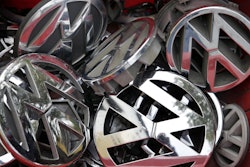Researchers at Rice University are working on self-assembling wires that can move matter powered by Tesla coils.
They’ve been working “very quietly” said adjunct assistant professor Paul Cherukuri. He describes the project, which incorporates Tesla coils and nano-scale filaments, as “self-assembly at a distance.”
The project started when the researchers were working with nanotubes, just seeing what they could do when pairing the coils with the electrification from Tesla coils.
via GIPHY
They found that, when connected to a Tesla coil, the nanotubes would create strings of connected patterns. These transferred the oscillating positive and negative charges from the Tesla coil to the nanotube strands, creating a self-assembling circuit.
Scientists have used electric fields to move objects before, but never at the distances seen in these experiments.
Lindsey Bornhoeft, the lead author of a paper the group published in the journal American Chemical Society Nano, said that the technique could be used to manipulate nanomaterials in silicon chips, conductive circuits and biomedical technology.
The researchers are calling the process Teslaphoresis.
Another step in the process came from a dream: Cherukuri dreamed that they could light up LEDs using the nanotubes and, since the nanotubes drew energy from the Tesla coil, it worked.
This also gave him the idea to test whether the effect of the Tesla coil could be widened, thus creating a “force field” effect whereby the nanotubes can receive a charge even from several feet away.
It worked – and the next step will be to find out how best to use the ability to manipulate matter at a distance.






















